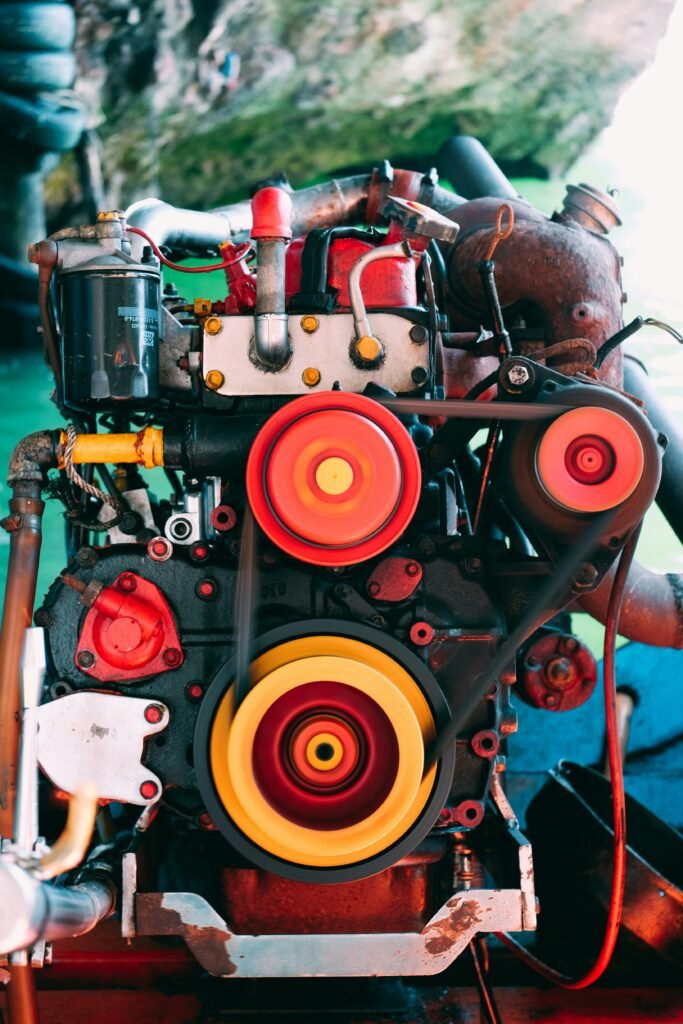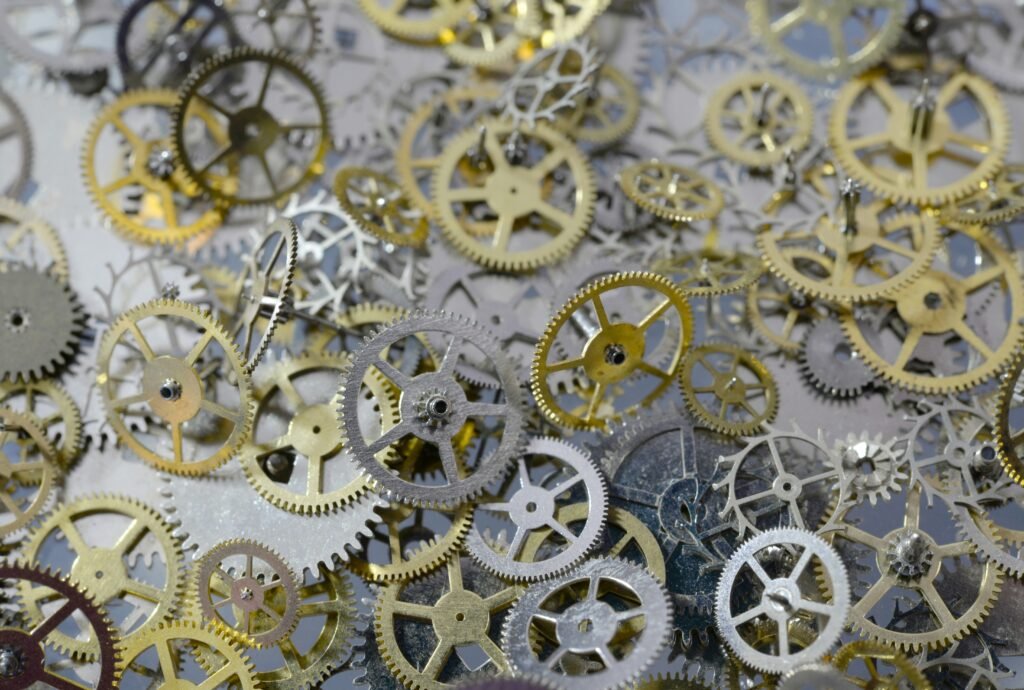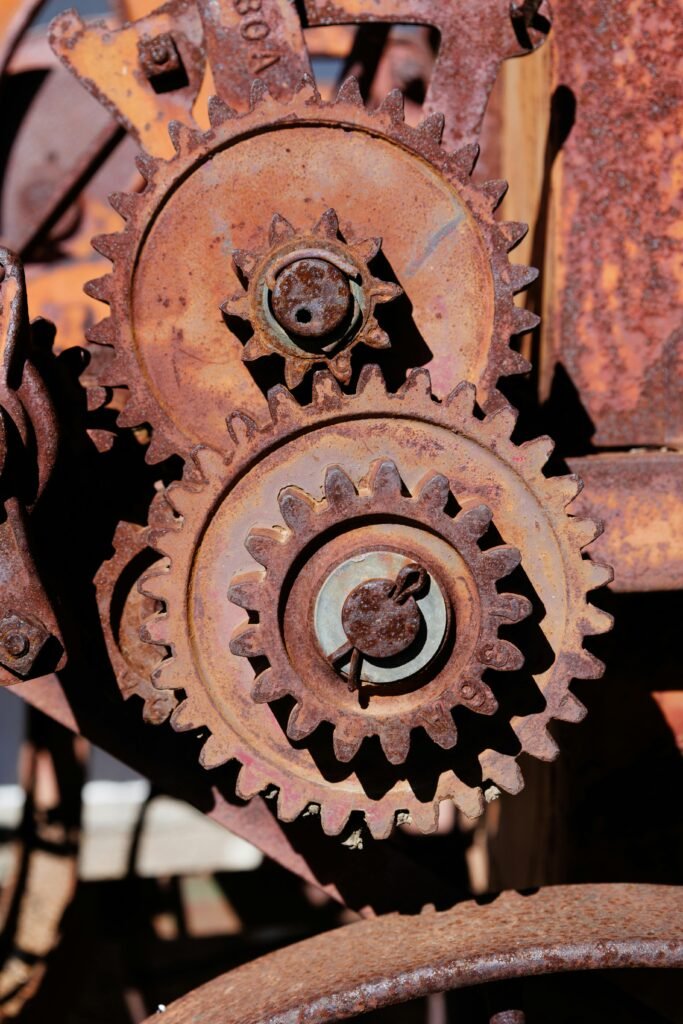Have you ever wondered how a humble timekeeping device works? In this article, you will gain a deep understanding of the key elements that make up clock mechanics. From the intricate gears and escapements to the vital role of the pendulum or quartz crystal, we will explore the essential components that keep our clocks ticking accurately and reliably. So, grab a cup of tea, lean back, and prepare to unravel the fascinating world of clock mechanics.

This image is property of images.unsplash.com.
Power Source
Clocks require a reliable power source to keep them running smoothly and accurately. There are three main types of power sources commonly used in clocks: mainspring, battery, and weights.
Mainspring
The mainspring is a coiled strip of metal that stores potential energy and provides the driving force for the clock mechanism. It is typically wound manually by turning a key or knob, which tightens the spring. As the mainspring unwinds, it slowly releases its stored energy, powering the gears and other components of the clock.
Battery
Battery-powered clocks, on the other hand, rely on electrical energy stored in a battery to operate. This type of power source is particularly convenient and hassle-free as it eliminates the need for regular winding. Simply replacing or recharging the battery periodically ensures that the clock continues to function.
Weights
In certain types of clocks, such as grandfather clocks or cuckoo clocks, weights are employed as the power source. These weights are typically made of metal and are attached to chains or cords. The weights are lifted manually, usually by pulling on the chains or cords, and their gradual descent powers the clock’s movement. Regularly raising the weights ensures the clock keeps accurate time.
Escapement
The escapement is an intricate mechanism responsible for regulating the flow of power from the power source to the other components of the clock. It determines the intervals at which the gears advance, allowing the clock to keep accurate time. There are several types of escapements, including the anchor escapement, verge escapement, and graham escapement.
Anchor Escapement
The anchor escapement is one of the most commonly used escapements in mechanical clocks. It consists of a pallet fork, which engages with the escape wheel, and an anchor, which stops the escape wheel from rotating. As the escape wheel rotates, it releases the lock on the anchor, allowing it to move forward and release the gear train. This elegant mechanism ensures precise timekeeping as the anchor’s teeth engage with the escape wheel’s teeth, effectively regulating the clock’s movement.
Verge Escapement
The verge escapement is an ancient design commonly found in early mechanical clocks. It consists of a verge – a toothed lever – that acts as an intermittent gear. The verge alternately locks and releases the escape wheel, controlling the flow of power through the clock. While less accurate than the anchor escapement, the verge escapement played a crucial role in the development of mechanical clocks.
Graham Escapement
The Graham escapement is a highly precise escapement system designed to improve the accuracy of clocks. It was invented by British clockmaker George Graham in the 18th century. The escapement utilizes an impulse pin and a gravity-assisted pendulum to provide extremely accurate timing. The Graham escapement is often found in precision timepieces and chronometers.

This image is property of images.unsplash.com.
Pendulum
The pendulum is a key element of many mechanical clocks, serving as the regulating mechanism for timekeeping. It consists of a rod with a weight at one end, suspended from a fixed point. The pendulum’s regular oscillation helps maintain the accuracy of the clock.
Length
The length of the pendulum plays a crucial role in determining the clock’s timekeeping accuracy. The longer the pendulum, the slower the clock will run, and vice versa. Clockmakers carefully adjust the length of the pendulum to achieve the desired beat rate for accurate timekeeping.
Amplitude
The amplitude of the pendulum refers to the distance it swings back and forth. It influences the overall stability and accuracy of the clock. Ideally, the pendulum should swing with a consistent and appropriate amplitude to ensure reliable timekeeping. Too much or too little amplitude can lead to inaccuracies in the clock’s movement.
Regulation
Clocks with pendulums often require periodic regulation to keep them running accurately. Regulation involves adjusting the length of the pendulum or altering the position of the pendulum weight to fine-tune the clock’s timekeeping. Clockmakers carefully calibrate the pendulum to ensure precise and consistent timekeeping.
Gears
Gears are an essential component of clock mechanics, responsible for transmitting and regulating power throughout the clock’s mechanism. There are different types of gear trains, each serving a specific purpose in clockwork.
Wheel Train
The wheel train consists of a series of gears, with teeth that engage and rotate together. These gears transmit power from the power source to the escapement and the hands of the clock, ensuring a consistent and accurate flow of power. Clockmakers carefully select and arrange the gears in the wheel train to achieve the desired gear ratio for precise timekeeping.
Strike Train
In clocks with striking mechanisms, such as grandfather clocks or mantel clocks, a separate train of gears, known as the strike train, is responsible for producing the striking sounds at specific intervals. The strike train receives power from the wheel train and operates independently to strike the hours or chime the quarters.
Calendar Train
Clocks that incorporate calendar features, such as date or moon phase displays, utilize a calendar train. This train of gears drives the various calendar components, advancing the date or the moon phase at the appropriate intervals. The calendar train operates independently from the timekeeping mechanism, ensuring accurate and synchronized calendar displays.

This image is property of images.unsplash.com.
Hands
The hands of a clock serve as visual indicators, displaying the time to the viewer. There are typically three types of hands: hour hand, minute hand, and second hand.
Hour Hand
The hour hand is the shortest and thickest of the three hands. It makes one complete revolution every twelve hours, indicating the current hour on the clock face. The length and design of the hour hand vary depending on the clock style and personal preference of the clockmaker.
Minute Hand
The minute hand is longer and narrower than the hour hand. It rotates once every hour, indicating the minutes that have passed since the hour hand’s last complete revolution. The length and style of the minute hand are carefully chosen to ensure easy readability and aesthetic harmony with the other components of the clock.
Second Hand
The second hand, the thinnest and longest of the three hands, rotates smoothly to indicate the seconds. While not present in every clock, the second hand provides additional precision in timekeeping. It seamlessly moves in a continuous manner, reflecting the precise flow of time.
Dials
Dials, also known as clock faces, provide a visual representation of time. They are typically divided into three separate sections: the hour dial, the minute dial, and the second dial.
Hour Dial
The hour dial, often situated in the center of the clock face, displays the hours in a format that is easy to read and comprehend. It is marked with numerals or indices, indicating each hour of the day.
Minute Dial
The minute dial surrounds the hour dial and is divided into sixty minute increments. It enables precise reading of the minutes that have passed since the last hour. The minute dial often includes smaller subdivisions, such as smaller indices or small lines, to facilitate accurate time reading.
Second Dial
The second dial, if present, is positioned on the periphery of the clock face. It features indices or numerals representing the seconds of the minute. This dial allows for precise observation of the seconds, particularly when the clock incorporates a second hand.

This image is property of images.pexels.com.
Chimes
Chimes add a melodic touch to certain clocks, providing auditory indications of the time. The chime system comprises various components, including chime rods, hammer mechanisms, and melody sequencing.
Chime Rods
Chime rods are slender metal rods of different lengths, each producing a distinct musical note when struck by hammers. Clocks with chime features often have a set of chime rods, carefully calibrated to produce harmonious and melodious sounds.
Hammer Mechanism
The hammer mechanism is responsible for striking the chime rods at the appropriate times. It operates in sync with the clock’s timekeeping mechanism, producing sounds to indicate the hours, quarters, or other predetermined intervals. The design and arrangement of the hammer mechanism ensure precise and controlled strikes on the chime rods.
Melody Sequencing
In clocks with multiple chime options, the melody sequencing mechanism controls the sequence in which the chime rods are struck. It allows for customization of the chime sounds, enabling the clock owner to select a preferred chime sequence or switch between different melodies.
Clock Case
The clock case refers to the outer housing or enclosure that protects and showcases the clock’s internal components. It serves both practical and aesthetic purposes. The clock case is crafted with various materials, designed to complement the overall style of the clock, and provide protection to the delicate mechanisms within.
Materials
Clock cases can be constructed from a wide range of materials, including wood, metal, glass, or a combination thereof. The choice of materials depends on factors such as the desired aesthetic, durability, and historical context. Wood is commonly used for traditional and antique clocks, while modern timepieces may incorporate materials like stainless steel or glass for a contemporary look.
Design
The design of the clock case encompasses the overall shape, size, and style of the enclosure. Clockmakers often consider the architecture and decor of the intended setting when designing the case. The case design can range from sleek and minimalistic to intricately detailed and ornate, reflecting the artistic preferences of the clockmaker and the era in which it was created.
Protection
One of the primary functions of the clock case is to protect the delicate clock mechanisms from external elements, such as dust, moisture, or accidental damage. The case’s construction and materials should ensure effective shielding, providing a safe environment for the clock to operate. Additionally, a well-designed case offers easy access to the clock’s interior for maintenance and repairs.

This image is property of images.pexels.com.
Striking Mechanism
Clocks with striking mechanisms, like grandfather clocks, employ additional components to produce striking sounds at specific intervals. The striking mechanism consists of strike hammers, a count wheel, and a silencing mechanism.
Strike Hammers
The strike hammers are small metal pieces in the shape of hammers that strike the chime rods or gongs, creating the audible sounds associated with the striking mechanism. The number of strike hammers varies depending on the clock type and the desired striking pattern. The hammers are carefully positioned and synchronized with the count wheel to produce the correct number of strikes.
Count Wheel
The count wheel is a notched wheel that regulates the number of strikes produced by the strike hammers. Each notch corresponds to a specific hour or quarter, determining the sequence and quantity of strikes. As the clock’s movement advances, the count wheel rotates and triggers the strike hammers accordingly.
Silencing Mechanism
To provide flexibility for the clock owner, a silencing mechanism is often included in clocks with striking features. This mechanism allows the striking sounds to be temporarily silenced, particularly during the night or in quiet environments. By engaging the silencing mechanism, the clock continues to keep time accurately without producing any audible strikes.
Regulator
The regulator is a crucial component that enables the fine-tuning and adjustment of a clock’s timekeeping accuracy. Its functions include speed adjustment, beat adjustment, and pendulum length adjustment.
Speed Adjustment
Clocks may experience variations in timekeeping due to factors such as temperature changes or natural wear of the components. The speed adjustment feature of the regulator allows the clock owner to modify the clock’s rate of timekeeping. By carefully adjusting the regulator, the clock can be made to run slightly faster or slower to maintain accurate time.
Beat Adjustment
The beat adjustment of the regulator ensures that the clock’s pendulum swings with a regular and consistent beat. An irregular beat can negatively impact the clock’s accuracy. By adjusting the beat of the pendulum, the clock owner can ensure that it swings evenly and maintains precise timekeeping.
Pendulum Length Adjustment
The regulator often provides the means to adjust the length of the pendulum, allowing for further fine-tuning of the clock’s accuracy. Clocks with adjustable pendulum length have a mechanism that raises or lowers the pendulum weight. By making careful adjustments, the clock owner can optimize the clock’s timekeeping performance.
Understanding the key elements of clock mechanics is essential for appreciating the intricate craftsmanship and design behind these timekeeping devices. From the power source to the hands, gears, and various other components, each aspect plays a crucial role in enabling a clock to accurately measure and display the passage of time. Whether you own a traditional mechanical clock or a modern timepiece, having a deeper understanding of its mechanics adds to the enjoyment of owning and admiring these beautifully crafted instruments.
